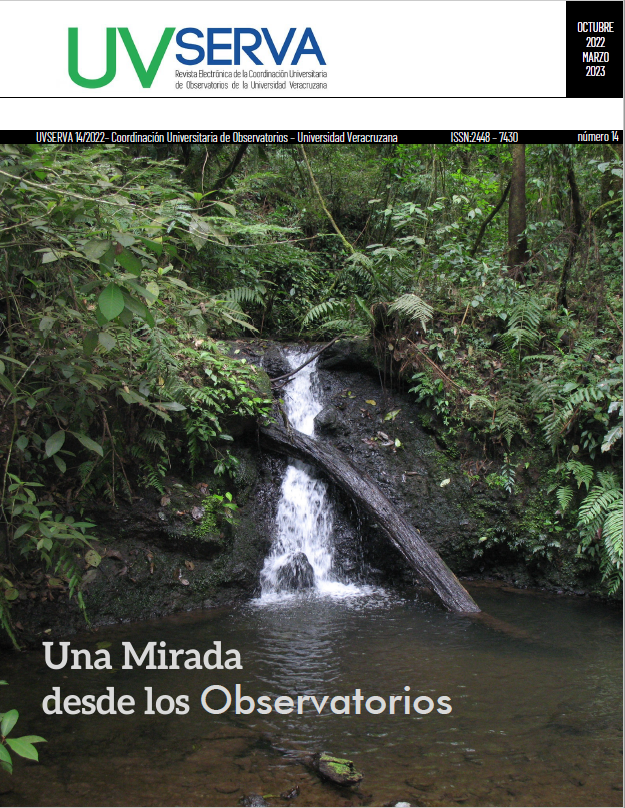Abstract
Urban parks are public spaces of cultural, social and environmental importance, for this reason they have been conserved over time, despite the growth of cities. In the historic center of Xalapa, Veracruz, there are three urban parks and one in its proximity, the oldest is the Miguel Hidalgo Park dating from 1886, the most recent Bicentennial Park inaugurated in 1992. The environmental importance of these public spaces lies in the biodiversity that they harbor, the environmental services that they provide and because they are places of recreation and leisure. Among the biodiversity they harbor, the trees stand out, with species of the original vegetation of the region and other introduced species. Through tours in urban parks, and a documentary investigation, data on the trees that give identity to the city collected and analyzed, identifying the emblematic specimens in the urban parks of the historic center of Xalapa, Veracruz.
Among the biodiversity they harbor, the trees stand out, with species of the original vegetation of the region and other introduced species. Through tours in urban parks, and a documentary investigation, data on the trees that give identity to the city were collected and analyzed, identifying the emblematic specimens in the urban parks of the historic center of Xalapa, Veracruz.
References
Calvento, M. & Colombo, S.S. (2009). La marca-ciudad como herramienta de promoción turística: ¿Instrumento de inserción nacional e internacional? Estudios y Perspectivas en Turismo, 18(3), 262-284. https://www.redalyc.org/articulo.oa?id=180714243002
Capitanachi, C., E. Utrera y C. Smith. (2004). El bosque urbano de Xalapa, Veracruz. Instituto de Ecología A.C., Universidad Veracruzana, Sistema de Investigación del Golfo de México (CONACYT), Xalapa, Ver., México.
Carranza-González, E. (2004). Hamamelidaceae. Flora del Bajío y de regiones adyacentes. Instituto de Ecología, Pátzcuaro, Michoacán.
Castillo-Campos, G. (1991). Vegetación y flora del municipio de Xalapa, Veracruz. Programa del Hombre y la Biosfera (MAB, UNESCO). Instituto de Ecología, A.C.-H. Ayuntamiento de Xalapa, Veracruz. 148.
Centro Agronómico Tropical de Investigación y Enseñanza-Instituto Interamericano de Cooperación para la Agricultura (CATIE). (2020). Árboles y palmas emblemáticos de las Américas. IICA-CATIE. Costa Rica. 144
San Eugenio-Vela, J. (2014). La marca de ciudad en la contemporaneidad. Poliantea, 10(19), 13–29. https://doi.org/10.15765/plnt.v10i19.573
Flores-Xolocotzi, R. (2019). Valoración de parques, árboles y plantas de ornato en Ciudad de México con datos de calidad de vida. región y sociedad, 31, e1175. https://doi.org/10.22198/rys2019/31/1175
Garriz, E. J., & Schroeder, R. V. (2014). Dimensiones del espacio público y su importancia en el ámbito urbano. Revista Guillermo De Ockham, 12(2), 25–30. https://doi.org/10.21500/22563202.59
Gobierno del Estado de Oaxaca, Secretaría del Medio Ambiente, Energías y Desarrollo sustentable (2019). Nuestras raíces. Catálogo de árboles notables y emblemáticos de Oaxaca.
H. Ayuntamiento de Xalapa. (2016). Reglamento de Desarrollo Urbano para el municipio de Xalapa, Veracruz.
Ibarra-Manríquez, G., G. Cornejo, N. González, E. Piedra, A. Luna. (2012). El Género Ficus L. (Moraceae) en México. Botanical Sciences, 90(4), http://www.scielo.org.mx/pdf/bs/v90n4/v90n4a4.pdf
López-Romero, C. (2014). La fundación del asentamiento de Xalapa: ilusiones decimonónicas y nueva propuesta historiográfica. Ulúa. Revista sociedad, ciencia y cultura. (24), 11-41. https://ulua.uv.mx/index.php/ulua/article/view/1839
Martínez-Valdés, V., Silva-Rivera, E., & González-Gaudiano, E. J. (2020). Parques urbanos: un enfoque para su estudio como espacio público. Intersticios Sociales, (19), 67-86. https://doi.org/10.55555/IS.19.277
Mendoza-Hernández, M. y F. Ramírez-Ramírez. (2021). Árboles singulares de Xalapa. H. Ayuntamiento de Xalapa, Xalapa, Veracruz.
Molina, M., F. Paniagua. (2011). Flora del Bajío y de regiones adyacentes. Familia Viscaceae. Fascículo. 171. Instituto de Ecología, A.C. https://libros.inecol.mx/index.php/FB/catalog/view/2011.171/101/617-1
Nee, M. (1981). Platanaceae. Flora de Veracruz. Fascículo 19. Instituto de Investigaciones sobre Recursos Bióticos, Xalapa, Veracruz.
Romero, S., E. Rojas y L. Rubio. (2014). Fagaceae. Flora del Bajío y de Regiones adyacentes. Fascículo 181. Universidad Nacional Autónoma de México Facultad de Estudios Superiores Iztacala. Laboratorio de Ecología y Taxonomía de Árboles y Arbustos. Tlalnepantla, Estado de México. http://inecolbajio.inecol.mx/floradelbajio/documentos/fasciculos/ordinarios/Fagaceae 181.pdf
Utrera, S. (2018). Los parques urbanos como identidad e imagen patrimonial de una ciudad; caso de Bucaramanga, Colombia. Tesis de Doctorado. Universidad de Granada, España.
Zamudio, S. (2002). Podocarpaceae. Flora del Bajío y regiones adyacentes. Centro Regional del Bajío, Instituto de Ecología, Pátzcuaro, Michoacán.

This work is licensed under a Creative Commons Attribution-NonCommercial 4.0 International License.
Copyright (c) 2022 Dr. Héctor Venancio Narave Flores, Dr. Miguel de Jesús Cházaro Basáñez, María de los Ángeles Chamorro Zárate


